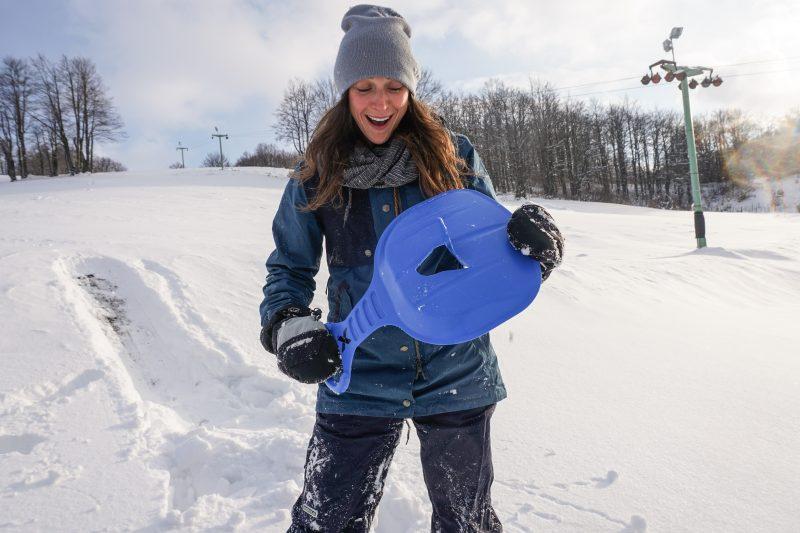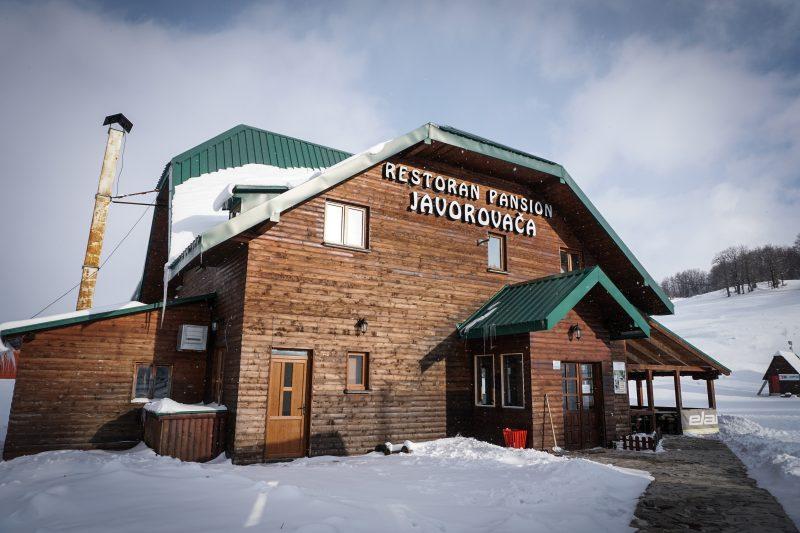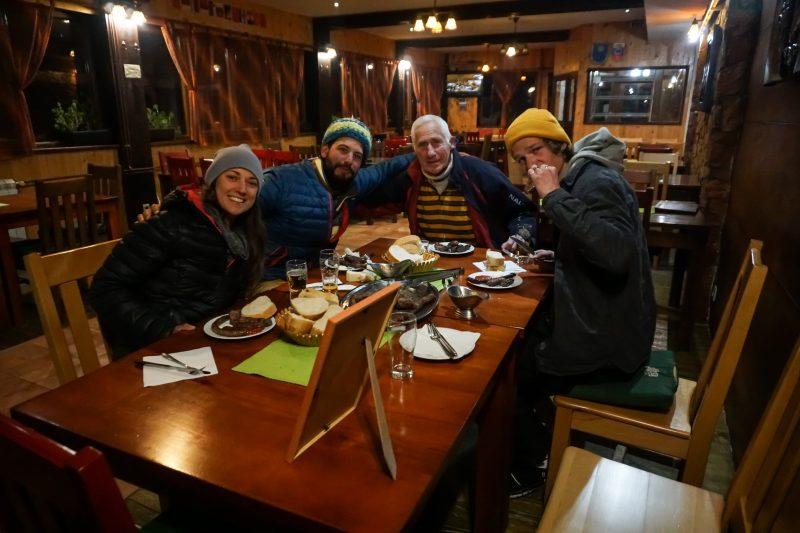Montenegro (part 1)
The Morača River, cradled by rugged mountains of Montenegro, is the main focus of the second Balkan Rivers Tour. It is extremely sad that a river like the Morača is in such danger, and that not many people seem to care or know about the threats that face the rivers of Montenegro. Although this river is one of the most beautiful in Europe, with its dramatic gorges and pristine water, it reflects the corrupt, greedy, and careless attitude toward rivers and natural heritage – a sentiment of disregard – not only to be found in the Balkan region. The strongest influences driving the ‘development’ (as the destructive action it is often referred to) across this region, clearly originate from the financial centres of power in Europe.
It was by no accident that we chose to emphasise Montenegro in our tour. Morača is a case example of what BRT aims to prevent. This tiny country has been exhausted by transitional politics, criminal elites, and it is notorious for its government corruption. While Montenegro is most recognised by the outside world for its beautiful coastlines and beaches, the beauty of its crystal-clear waterways and mountainous regions are often overlooked by tourists and government officials alike—but there is a secret and shrewd agenda behind this fact. People that live off the land in these regions seem to be overlooked by their country’s politicians, lawmakers and other citizens with influence. The same people who earn money by lobbying for (often foreign) businesses who come here to invest, decide the fate of Montenegro’s mountains, lakes, and streams, although they share no connection to these wild and scenic spaces or to the people who live in them. Even though these deals are made in the name of development, the clear goal is to make somebody rich. Locals in these areas seldom benefit financially from these under the table deals. They also lose the rich aesthetic of their homeland through the destruction of the natural environment, potential tourism revenue, and other unforeseen socioeconomic and environmental damage in the process.
The building site of the hydropower station at the source of Morača river draws a great caricature of the situation in the Balkans. As Rok Rozman explained to me: “A private company gets a grant to build an HPP in a sensitive area, based on environmental impact assessment reports issued by bribed officials. Often these projects get subsidised by the countries themselves or even by international funding, all in the name of green energy development. Of course, the project is green on paper, but in reality, the HPP won’t be functional for more than maybe a few weeks per year, since it is built in an area the is notorious for drought. The hydropower project and its ‘green’ power production is just a façade for the money laundering and extraction of public funds that takes place during these projects. The other factor that varies greatly from the initial proposed plan is the reality of just how much it will cost to build one of these hydropower projects. ‘Build for less, charge more’, is typically the name of the game for hydropower developers in this region. However, once they are built, these hydro projects quickly become obsolete, and a few years down the road, they are sold to a West-European country to increase their percentage of renewable energy and avoid getting fined for not following international agreements. Thus, all hands are washed, and all are happy – except the public never finds out about how they were robbed of their tax money and the beautiful source of Morača River.” Forever scarred by human intervention, the Morača will never be attractive for tourism, and the only benefit for the locals who have lived there for their whole lives will be the 50 euro bribe that they got to sign an agreement for the building to commence (that is a fact learned from the locals). Unfortunately, the potential for sustainable income from tourism has been lost for them, the minute they accepted this deal with ‘the devil’.
The Morača possesses potentially one of the best full-day rafting sections of whitewater in Europe, and it finishes minutes away from the country’s capital and its international airport. The question is, why are there no rafting or any other type of whitewater businesses on the Morača? Locals have the answer—their outdoor recreation business ideas are strongly discouraged by the government since they say that the dams will be built there soon. The government has continually hindered this type of tourism development, even though it possesses clear benefits for many locals in the area. It is clear that certain people don’t want anyone to stand between them and the construction of a hydropower project when ‘the day’ comes.
Montenegro is a lot more than just a beautiful coast. During our tour, we didn’t have time to visit many places. But, even just the Source-to-Sea expedition on Morača-Lake Skadar-Bojana was a multi-day mission that impressed us all and left us longing for more experiences in this incredibly beautiful country with diverse nature and very interesting cultural history. Short descriptions of some of the other destinations that we have visited in Montenegro on this trip are included in this blog post, while the next blog post will be dedicated to our Source-to-Sea journey.
LOCATION: Durmitor
SPORTS: Kayaking, rafting, hiking, mountaineering, climbing, fishing, canyoneering, horseback riding, skiing, snowboarding.
WHERE TO STAY: Tara River for water sports. The Grab Ethno Village and Camp is owned by our friends, great supporters of BRT efforts and defenders of the Tara River Canyon. They organise activities as well. Žabljak is a hub for mountaineering and winter sports. We stayed at Javorovača Restaurant-Pension. Apartments are clean and very modern, while very reasonably priced. Food is amazing!
Durmitor region deserves a whole blog post of its own. It is a region with incredible opportunities for outdoor activities and immense natural beauties. Tara is a famous whitewater destination that attracts kayakers and rafters from all over Europe and it is known as one of the deepest river canyons in the world. While not free of HPP threat, Tara has been on the scientists’, local conservationists and NGOs’ radar for years, which is why we skipped this location and concentrated on less known rivers, that are getting dammed while the media attention is on higher profile cases.
We didn’t paddle at all in the Durmitor, but we stumbled into a snowstorm at Zabljak, which led to a great day of springtime ski touring for Rok.
- Who said you can’t ride a shovel too hard? Not Carmen! (While Rok is ski touring)
- Javorovaca Restaurant and Pension
- Dinner grilled by the boss himself and he resisted charging us for food. What a hospitality – Javorovaca!
LOCATION: Šavnik
RIVER: Bijela III (IV at higher flows), Bukovica
SPORTS: Kayaking, hiking.
BIJELA PUT-IN: Orthodox Monastery 42°56’24.73″N / 19° 6’1.15″E
TAKE-OUT: Bridge immediately after the gorge, by Šavnik.
Bijela and Bukovica are the common kayaking rivers in the area. I haven’t seen the Bukovica but it is the easier of the two. Bijela is characterized by a narrow gorge and some nice drop-pool rapids. Well worth visiting if it has water. If not, at least visit the Bijela Gorge Monastery. Local Pop is a legend. Ask him for his homemade liquor, cheese, fruit and pickled stuff.
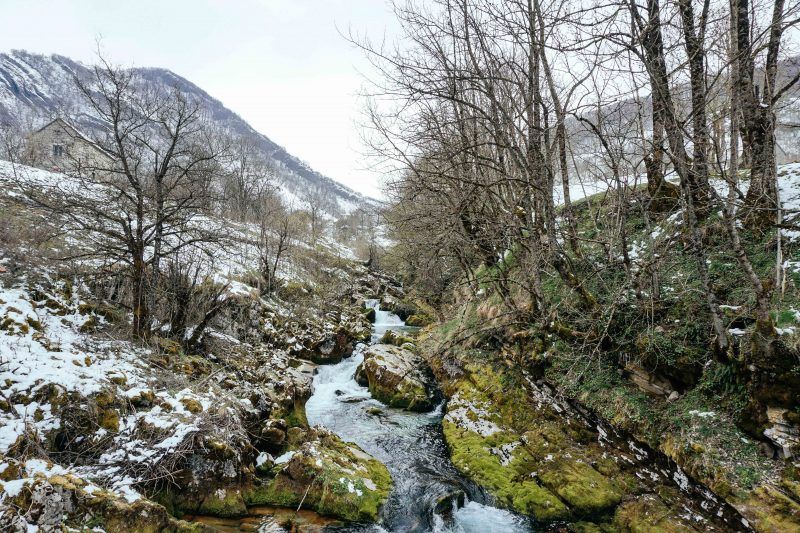
River Bijela above the kayaking section.
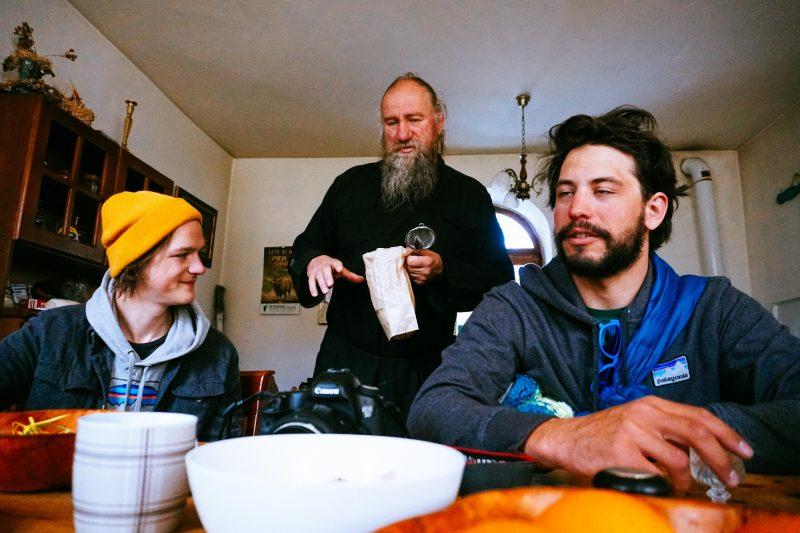
Pop is treating us really well. Few degustations in, Rok isn’t sure about going kayaking anymore.
River Mrtvica
Since the next blog post will be fully dedicated to Morača River, I decided to write a description of this class V treat in this write-up. Mrtvica is a Morača tributary and it is one of the most beautiful river sections that I have ever done. It is very short but also full-on. I almost ran into a deadly siphon on this section so be very careful! We hiked a few kilometres from the confluence to the put-in, which is a special site (see the photo). I am not sure if you can kayak any sections above but that is for other class V kayakers to find out! As it is such a hard and special section, I don’t want to go into too many descriptive details. Class V kayakers will understand why.
You can camp for free at this dude’s property at the confluence. I can’t remember his name but he is really hard to miss. He is a great character and has been defending the Mrtvica River from HPPs for decades. There is a signpost by his house that says free camping, but he sells food and drinks. All is homegrown and homemade and super tasty. What a treat – and super cheap as well.
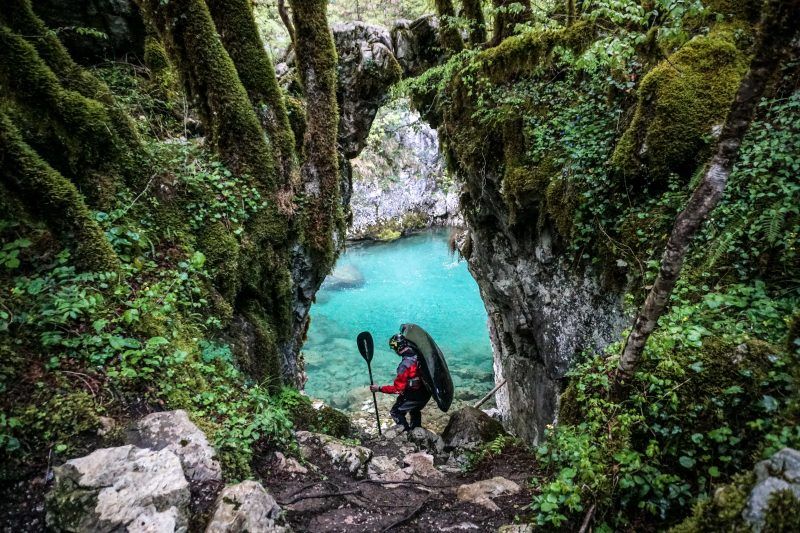
Put on River Mrtvica
